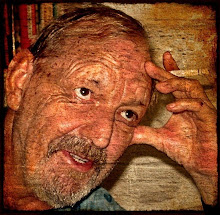They have all managed the transition between water and air breathing, although often in quite different ways. This is a fairly momentous step for a mere crustacean.

Kayabang (Cardisoma hirtipes) live back in the coastal coconut groves, digging large holes, that, like earthworm casts, help circulate and aerate the soil.
Once a month, at full moon, dozens of kayabang come out of the coconuts, and head straight to the beach to mate and lay their eggs. They march purposefully in an almost straight line, often through the town. At the last full moon, one came straight through a group of us sitting outside Lourdes' Food House, only to be trapped by Big Marty's foot. He told me it made a good part of his breakfast. The local people go to the beach at full moon with flaming torches made from dried coconut leaves, and pick them up by the dozen.

Their claws are roughly equal size, but still just as vicious, and they are fiercely defencive.
This is one who came through the house, and finally ended up defending my dish rack.

Kayangjan (Cardisoma armatum) live near creeks and mangroves, and don't have the same mass mating system.
One claw is much bigger than the other. The right hand claw is usually the bigger. This is similar to humans, whose right hand is usually the stronger.
Because of their bright colours, they are known as rainbow crabs in other areas, and are very common all over the Pacific.












